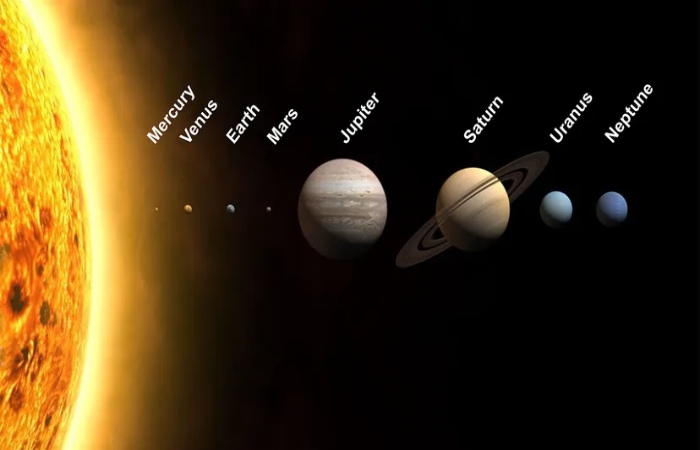Solar System Write For Us

The solar system, a celestial marvel that encapsulates our cosmic neighborhood, is a captivating ensemble of planets, moons, asteroids, and a radiant star. From the scorching proximity of the sun to the icy depths of the outer reaches, each celestial body within this vast expanse holds its own allure, unveiling mysteries that have intrigued astronomers and space enthusiasts for centuries.
The Sun – Our Radiant Star:
At the heart of the solar system lies the Sun, a colossal sphere of burning gases that illuminates and sustains life on Earth. This luminous star, primarily composed of hydrogen and helium, exerts a gravitational pull that binds the planets in orbit around it. Its magnetic activity gives rise to mesmerizing solar flares and sunspots, influencing space weather and impacting technology on Earth.
The Inner Planets:
Closest to the Sun are the four rocky planets collectively known as the inner planets: Mercury, Venus, Earth, and Mars.
1. Mercury: Mercury, the smallest planet, orbits closest to the Sun and experiences extreme temperature variations. Its surface is scarred by craters and possesses a barren landscape.
2. Venus: Venus, often called Earth’s twin due to its similar size, is shrouded in thick clouds of sulfuric acid, creating a stifling greenhouse effect. It is the hottest planet in the solar system.
3. Earth: Our home planet, Earth, teeming with life and diverse ecosystems, harbors vast oceans, continents, and a protective atmosphere conducive to sustaining life.
4. Mars: Mars, with its reddish hue, has fascinated scientists with the possibility of harboring water and potential habitats for microbial life. Robotic missions have explored its surface, revealing intriguing landscapes and geological features.
The Gas Giants and Beyond:
Beyond the asteroid belt lie the gas giants – Jupiter, Saturn, Uranus, and Neptune, each distinct in its composition and characteristics.
1. Jupiter: Jupiter, the largest planet, is a colossal ball of gas dominated by swirling clouds and the iconic Great Red Spot, a massive storm system. It boasts a retinue of moons, including the four Galilean moons: Io, Europa, Ganymede, and Callisto.
2. Saturn: Saturn, known for its majestic rings made up of icy particles and dust, captivates observers with its beauty. Its rings, composed of countless ringlets, orbit the planet, creating a celestial spectacle.
3. Uranus: Uranus, characterized by its unique sideways rotation, is an ice giant with a faint ring system and a set of moons. Its bluish hue results from the presence of methane in its atmosphere.
4. Neptune: Neptune, the farthest gas giant from the Sun, boasts a vivid blue coloration due to the presence of methane. It exhibits powerful storms and is accompanied by a system of moons, the largest being Triton.
Moons, Asteroids, and Dwarf Planets:
Beyond the major planets, the solar system hosts a myriad of moons, asteroids, and dwarf planets. Moons such as Europa, Enceladus, and Titan intrigue scientists with the possibility of subsurface oceans and potential habitats for life. Asteroids, remnants from the early solar system, orbit the Sun, and some have even been visited by spacecraft for close study. Dwarf planets like Pluto and Eris, once considered full-fledged planets, inhabit the Kuiper Belt, a region beyond Neptune populated by icy bodies.
Unraveling Mysteries and Future Exploration:
The exploration of our solar system continues to unravel mysteries and push the boundaries of human knowledge. Robotic missions, like NASA’s Perseverance rover on Mars and the Juno spacecraft orbiting Jupiter, provide valuable insights into these celestial bodies.
Future endeavors aim to explore the icy moons of Jupiter and Saturn for signs of habitability, while plans for manned missions to Mars and beyond ignite the imagination, fostering dreams of interplanetary travel.
How to Update Your Articles?
Once your article is prepared, you could publish it to the journal. You can generally put up your document by using this email: contact@beingapps.com
Why Write for Being Apps – Solar System Write for Us
Writing for Being Apps can give massive exposure to your website for customers looking for Solar System.
Being Apps presence is on Social media and will share your article for the Solar System related audience.
You can reach out to Solar System enthusiasts.
Search Terms Related to Solar System
gravitationally
Sun
objects
orbit
planetary system
terrestrial planets
Mercury
Venus
Earth
Mars
giant planets
gas giants
Jupiter
Saturn
ice giants
Uranus
Neptune
rock
metal
hydrogen
helium
volatile
Search Terms for Solar System Write for Us
Solar System Write for us
Guest Post Solar System
Contribute Solar System
Solar System Submit post
Submit an article
Become a guest blogger Solar System
Solar System writers wanted
suggest a post Solar System
Solar System guest author
Write For Us + Solar System
Article Guidelines on Being Apps – Solar System Write for Us
We at Being Apps welcomes fresh and unique content related to Solar System.
Being Apps allow a minimum of 500+ words related to Solar System.
The editorial team of Being Apps does not encourage promotional content related to Solar System.
For publishing article at Being Apps email us at contact@beingapps.com
Being Apps allows articles related to startups, apps, ai, tech and many more.
